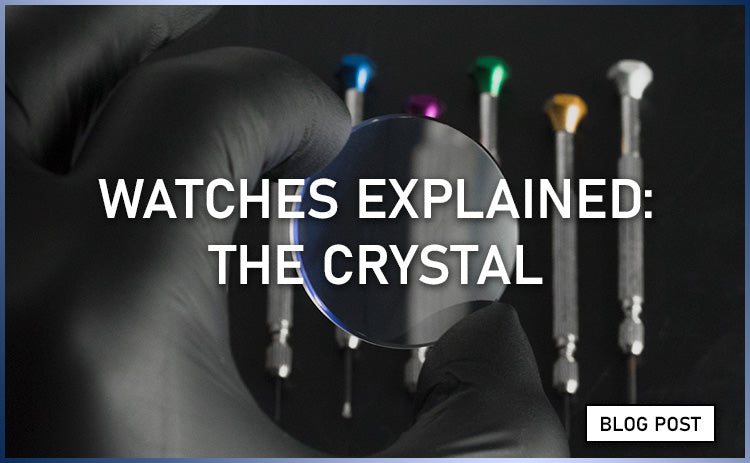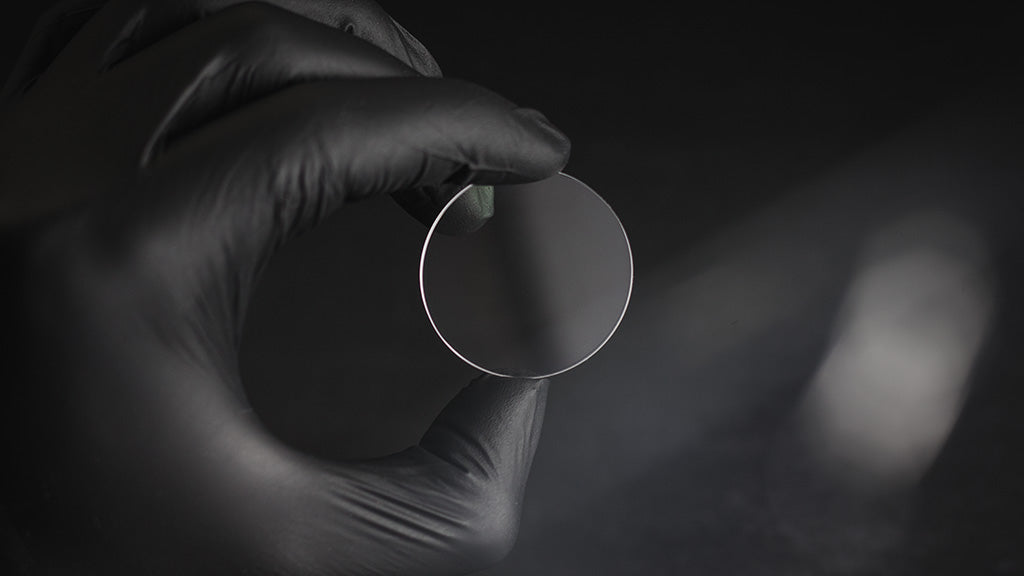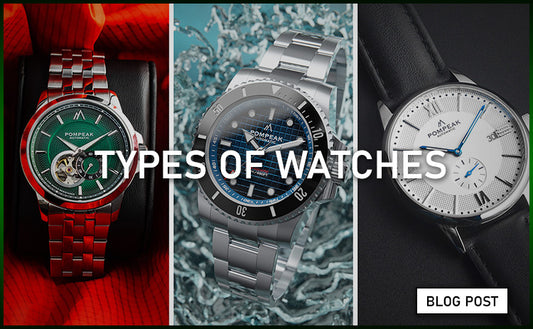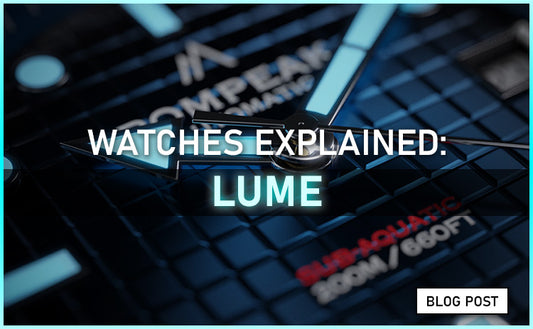
Watches Explained: The Crystal
Share
Watch crystal aka watch glass. Every watch has one protecting the dial, and you may see terms like Sapphire, mineral, double domed or AR coated when browsing technical specifications, but do you know what they all mean?
In this blog, we'll be diving into and deciphering the various options available to ensure you're armed to invest in the right timepiece for you.

Acrylic
Watch glass is typically just that - glass. Acrylic on the other hand is a plastic/polymer option that is typically only found on extremely cheap watches or those made for children. The softness of acrylic means that it typically won’t shatter under impact, however it is very easy to scratch, mark or dent.

There are few upsides to choosing a plastic watch crystal besides the low cost and very minor weight reduction, which when looking at the entire watch, is almost negligible. If you really are looking to trim the weight of your watch, you'll find much better returns focussing on the case and bracelet - think swapping that bracelet out for a NATO strap.
Look out for terms like; Hesalite, Plexiglass or Perspex, as they are just branded versions of acrylic. Another indicator that the crystal is acrylic based is if it isn’t listed in the specs at all.
Mineral
The most common type of watch crystal is mineral. Appearing on the vast majority of entry level timepieces and fashion watches. To create it, Silica is added to the manufacturing process of tempered glass resulting in a more scratch resistant product, while still remaining relatively cheap to produce.
As it’s a variation of tempered glass, mineral crystal feels like the real thing and a huge step-up from acrylic, but it isn’t completely scratch resistant, and you shouldn't expect the flawless finish to last forever. Smaller scuffs can often be buffed out, while the more severe scratches may require an entirely new crystal.

'Hardened mineral glass' such as Hardlex are hardened versions of mineral crystal, which aim to address these imperfections in scratch resistance. Take this with a grain of salt as the success of this varies and is widely disputed within the watch community.
Unlike acrylic, an Anti-Reflective coating can be applied to mineral crystal to increase readability in harsh conditions, but I’ll go into more detail on this later.
Sapphire
Sapphire crystal is not actually the naturally occurring gemstone, nor is it technically glass. It's synthetically produced transparent crystallised aluminium-oxide...
Sounds fancy right?
Well, it is, and has a hardness (relatively) close to that of diamond!
Diamond is one of hardest materials on planet earth scoring a 10 on the mohs hardness scale. Sapphire sits just below it at 9, with mineral glass and acrylic sitting at around 5 and 3 respectively.
What this means is that unless you're using sharp diamonds, your watch crystal will be virtually un-scratchable!

While sapphire is near impervious to scratches, it's worth noting it can shatter under heavy impact. Practically this is rarely an issue, but just hold off attacking your new watch with a hammer.
In reality, any signs of wear on your watch are going to be on the case and straps, with the Sapphire crystal keep the dial view as clear as ever.

Creating the hardest crystal on the market isn’t cheap so sapphire typically reserved for those higher end watches. That said, we feel it's a justifiable upgrade at almost any price point and include it as standard in all of our watches.
How to tell the difference
There are a few things you can do to check whether a watch has sapphire or mineral crystal. If you've been around both for a while, you may be able to notice a subtle difference in feel. For the average viewer however, there are two practical tests you can do:
Generally speaking, cut mineral glass has the classic blue hue, whereas Sapphire crystal has a white look.

A more reliable method of distinction would be to test some character such as the density, refractivity, hardness or even thermal conductivity, which can be tested using an affordable hobbyist 'diamond tester'.

Other crystals
Sapphire coated mineral glass is a recent offering that has been adopted by some micro-brands and as the name suggests, this glass is comprised of a layer of mineral glass topped with a sapphire coating. Seiko also use a version of this under the pseudonym 'saflex'.
This 'best of both worlds' solution was intended to provide a boost to the scratch resistance of mineral glass, although there have been reports of the sapphire layer being chipped off or separating completely.
Coatings
I’ve mentioned anti-reflective (AR) coatings a couple of times in this blog, but what exactly is it?
Anti-reflective (AR) coatings can be applied to both sapphire and mineral crystals and are a game changer when it comes to watch readability.
When applied, the coating is generally found on the dial side surface of the crystal and works to alter the path of reflecting light waves to cancel themselves out.

Sometimes referred to as 'Anti-Glare', you’ll find the exact same thing used on eyeglasses, telescopes, or anything with a lens!
Depending on the solution, the AR coating can also give the remaining reflections a coloured tint (often red or blue). The aesthetic impact of which is of course subjective, but personally, I love it.

Shapes
It’s not just materials you need to consider when choosing your next crystal, shape has a huge impact on face readability, strength and of course the aesthetic of the overall timepiece.
Most are variations of the same two categories: flat or domed.

Domed crystals are often found on (but not limited to) dive watches due to the higher pressure resistance compared to flat glass.
When it comes to readability, a domed outer surface of and flat inner surface of the crystal can create a magnifying glass effect resulting in severe distortion in the view of the dial. This is solved with Double domed crystals which have matching profiles on both the inner and outer faces.

Summary
Each crystal type has it's pro's and con's so you'll need to weigh up which one suits you. For us, the cost increase of Sapphire is more than justified by its impact resistance and almost flawless scratch resistance, which is why Pompeak uses it on every collection.





